A podcast is a digital audio series that people subscribe to and listen to on-demand through apps like Apple Podcasts or Spotify. It’s essentially your own radio show that builds direct relationships with your audience and can become a powerful business and marketing tool.
But here’s the rub:
A lot of people think creating a podcast is too complicated for them – it seems like a lot of work, you need a lot of equipment, time and even getting the right guests on seems like a lot of effort.
Or sometimes, they think that it’s way too simple to be taken seriously as a business or marketing channel.
But we’ve helped thousands of people start podcasts, and here’s what we’ve learned:
This misconception keeps thousands of experts, entrepreneurs, and passionate individuals from sharing their knowledge and building audiences.
Meanwhile, they watch others with less expertise gain influence and income through podcasting, simply because their competitors understood how accessible and powerful the medium really is – and didn’t wait until they had it all figured out to start a podcast!
The truth is, podcasting sits in the perfect sweet spot—accessible enough for anyone to start in hours with basic equipment, yet sophisticated enough to build serious businesses and communities.
With the right platform and approach, you can go from asking ‘What is a podcast’ to ‘I have a podcast’ in less than a week.
In this article, we’ll cover:
- The most common questions about what a podcast is
- Why a podcast is such a powerful marketing channel for any business
- The quickest way to start a podcast in 2025
By the end of this guide, you’ll be able to confidently take the next step in your podcasting journey and know exactly what to do to publish the first episode of your brand new podcast.
Action
If you’re thinking about starting a podcast and want all the tools to distribute, monetize and build your podcast audience, you should check out Castos. You can get a 14 day free trial of all the features – the best time to start is now. Start your free trial now.
What is a Podcast? (Podcast Meaning and Definition)
What is a podcast? A podcast is an digital audio file that’s made available on the internet. Listeners can download the file to their devices or stream it through a listening app. Episodes are typically released as part of a series.
Generally speaking, the audio of podcast episodes consists of the spoken words of a host (or multiple hosts), though many shows include music and sound effects to various degrees. Episodes (and the overall show) revolve around specific themes, like parenting, entrepreneurship, nutrition, etc.
You’ve probably heard of podcasts Limetown, How Stuck Works, Joe Rogan, or Hardcore History. Here’s an example of a podcast episode from our very own show, The Limelight.
What Do the Words “Podcast” and “Episode” Mean?
The term “podcast” is quite versatile, after all. Some people use it to describe the overall program that produces episodes. But others use the word podcast when they speak about the individual episodes themselves.
For instance, both these statements are correct:
- “This American Life is my favorite podcast.” (In this case, the person references the show.)
- “I just downloaded another podcast from This American Life.” (In this case, the word podcast refers to the episode of the show.)
So, often, when you hear someone talking about podcasts, they may mean the show or the episode, and often need to get the actual meaning from the context.
In general, however, we prefer to use “podcast” in regards to the overall show. Each individual episode should be referred to as an “episode.”
What’s an Example of a Popular Podcast?
If you want to get an idea of what is a podcast, here are some of the top shows for you to check out:
We offer some examples of shows in our guide on the most popular podcasts.
Explore more podcasts by checking out our guides on the best shows by category:
How is a Podcast Different From a Radio Show or Other Forms of Media?
The main factor that makes a podcast different from a radio show or other media is how you access it. Podcasts are available to download or stream on the Internet.
Also, unlike radio, podcasts are pre-recorded and offer a wide range of formats. For example,
- A typical episode can be as short or as long as its creator wants it. Some episodes offer just short snippets of information, while others offer long-form content that spans more than an hour per episode. It all depends on your podcast topic.
- Podcasts have different publishing frequencies too. Some shows offer new content daily. Others post new episodes on a weekly, bi-weekly, or even monthly schedule.
- As you’ll see shortly, they can also have a different format featuring anything from a solo show to a whole cast.
- Finally, podcasts cover an extensive range of topics, including news, storytelling, comedy, education, true crime, technology, sports, and much more.
Are Podcasts Free to Listen To?
Yes, most podcasts are free to listen to. Instead of charging listeners to access the show, most creators use advertising or listener support through platforms like Patreon to monetize their shows.
That said, some podcasts offer additional content or paid subscriptions, or membership models.
What is a Video Podcast?
A video podcast is a traditional podcast with a video element. Videos are added to podcasts for several reasons:
- To increase engagement (because people love videos) with your podcast listeners.
- To open the show to a target audience that only wants to see videos.
- To publish the show on video platforms like YouTube or Vimeo.
To create a video podcast, all you have to do is record yourself (and any guests) during the recording. You can add b-roll or custom footage if you like for extra production value. Here’s an example:
If you prefer a low-effort approach, some creators simply attach the image of their podcast cover art to their recording’s MP3 file. It’s a static image, but it counts as a video for platforms like YouTube.
How Did Podcasts Start?
I bet you’ll be surprised to hear that, but the concept of podcasting isn’t actually that new. In fact, it goes back several decades.
Back in the 1980s, for example, we used to listen to something that was called an “audio blog.”
Now, audio blogs (or audio journals, as they were also known) weren’t online shows or anything. The Internet was still in its infancy back then, after all. We didn’t have computers to record our audio on either.
Instead, when audio journaling, people would record their personal thoughts or experiences on cassette tapes using portable tape recorders. These recordings were similar to modern-day podcast content but were limited to offline sharing with friends, family, or a small circle of acquaintances.
When the internet took off in the 1990s, some radio stations and comedy shows offered downloadable versions of their audio content. These still weren’t podcasts as we know them today, but they were close.
Many portals would also create pre-recorded audio shows and offer them as downloads from their sites. These shows haven’t been aired, and they existed only as an mp3 file that anyone could download and listen to at their own peril.
In the early 2000s, when people began to distribute their audio content via RSS feed, which allows users to “subscribe” to a show and receive constant updates.
And so, modern podcasting was born.
What About the Term “Podcast”?
That’s an interesting story, too.
You see, the term – podcast – comes from a combination of two words, iPod and broadcasting.
The term was first used in 2004 by journalist Ben Hammersley, who used the term to describe the emerging trend of distributing audio content over the Internet, and based it on the most popular audio player back then.
But naturally, podcasts are not limited to iPods anymore. You can listen to audio podcasts on a whole range of devices. Yet the term “podcast” stuck, and that’s what we use today when describing these amazing audio shows.
Action
Want to make money with your show? Check out our complete guide on podcast monetization.
What are the Different Types of Podcasts?
When you ask someone, “What is a podcast?” they will usually offer different types of shows. If you think an audio-only format is limiting, think again!
There are countless ways to organize a show’s content to make it compelling for your listeners. Choosing a clear format and staying consistent is key to building a reliable base of listeners. If your show features a serious solo monologue one week, a comedy panel the next, and a fictional story the week after, you’ll struggle to hold on to your listeners.
Here are the most popular podcast types:
The Interview Podcast
This is the most popular format. A host (or hosts) interviews a new guest on each episode. Here’s an example of an interview-based show.
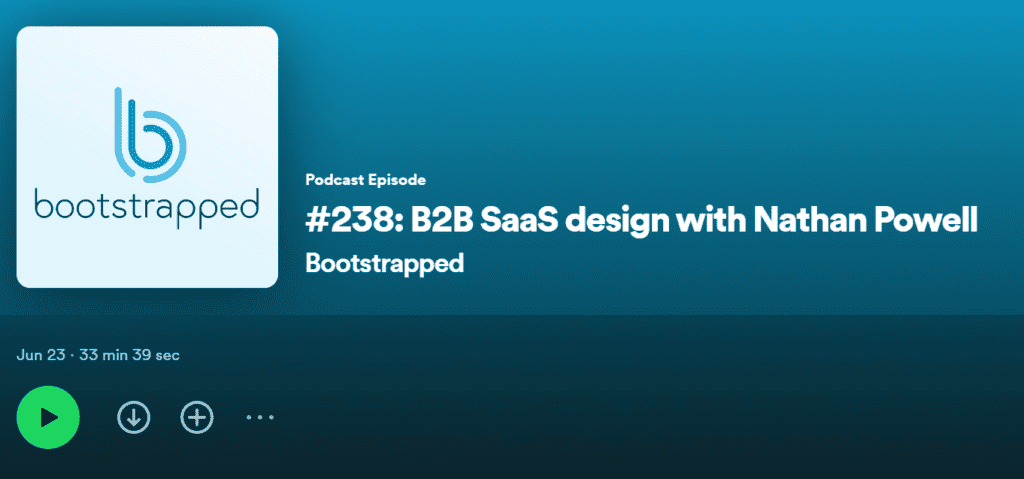
Solo/Monologue Podcast
A simple narration from one person. It’s ideal for anyone who is an expert on a specific subject. Educational shows typically use this format.
Conversational/Co-Hosted
This is when two people (who have great chemistry together) have a conversation together.
Panel Podcast
This is similar to an interview show but with a larger group of people having an organic discussion.
Nonfiction Storytelling
These are episodes about real-life events, such as a series of murders, a chronicle of an expedition up Mount Everest, or a historical event.
Fictional Storytelling
These fiction shows are told across multiple episodes, similar to dramatic television. A single person narrates some. Other shows use teams of voice actors.
Repurposed Content
This is when you take existing content and translate it into audio form. For instance, a church podcast might record its weekly sermons and release them as podcast episodes.
How Do You Listen to Podcasts?
Listening to podcasts is simple as long as you have access to the internet. Most podcasts are free to listen to. You just need to find a website, platform, or app that suits you.
Listening to Podcasts on a Website
Most podcasts have a website for their show. These websites usually have pages for each episode. Each page includes an audio player along with other assets, like show notes and a transcription. Simply click play on the audio player to enjoy the episode.
Listening on Your Tablet or Phone
If you want to listen to podcasts on your mobile device, your first step is to download a listening app. Apple Podcasts, Google Podcasts, and Spotify are the most popular options, but there are lots of alternatives. See our full list of podcasting apps. (iPhone and iPad users should already have the Apple Podcasts app installed.)
Once you have installed a podcast listening app to your mobile device, simply search the app for interesting podcasts. You can listen to any episode you like. If you enjoy the podcast and want to be notified about future episodes, use the subscribe button.
Can you Listen to Podcasts Offline?
Absolutely! Most podcast apps allow you to download episodes in advance so that you can listen to them without an internet connection. That said, you have to remember to download an episode before you disconnect. Otherwise, it won’t be available to listen offline.
Here’s an example of a download button on our podcast episode in the Spotify app.
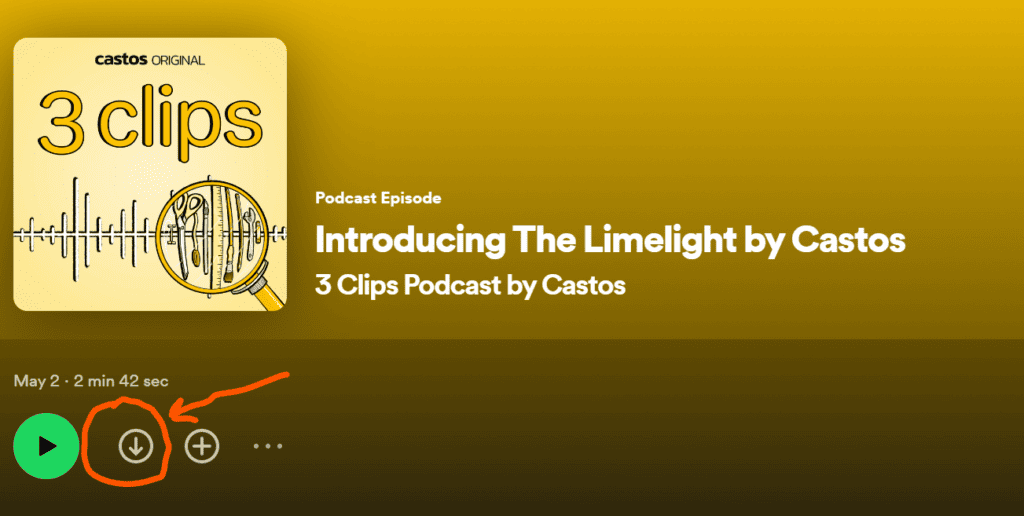
Who Creates Podcasts?
Podcasts are created by individuals or teams who produce and record the content.
They can be professional productions or amateur endeavors, with hosts or experts discussing specific subjects.
Who is a Podcast Producer?
Some shows use a podcast producer to handle production and the management side of the program. They handle the recording, editing, promotions, and other behind-the-scenes activities. This allows the host to focus on producing great content.
How Do You Start Podcasting?
Starting a podcast has a slightly higher barrier-to-entry then other forms of content creation.
But once you have everything in place, it’s our experience that creating a new episode takes less time then writing a blog post or producing a video. This is especially true if you outsource some of the tedious parts of the process, like editing and promotion.
So how do you start a podcast? It boils down to these 10 steps.
- Choose a topic
- Determine the right format
- Give your show a name
- Create cover artwork
- Pick up some basic equipment
- Select a podcast hosting service
- Plan your first episode
- Record your first episode
- Edit your episode
- Upload your episode
As you can see, the process is fairly straightforward. After publishing your first episode, all you have to do is repeat step seven through 10 for subsequent episodes.
We recommend distributing your show to all of the podcast listening apps once you have three episodes published. This gives new listeners something to binge when they discover your show.
Action
For a much deeper look into the setup process, read our extremely deep guide on starting a podcast.
How are Podcasts Distributed?
A big part of running a podcast show is making it available to listeners and ensuring that they can listen to it using their preferred method.
Podcasters refer to this as distribution, and it basically means making a show available on as many podcast listening platforms and apps as possible.
In order to make your show available on each podcast listing platform, you have to visit the platform’s site and submit your RSS feed. The process varies slightly on each platform, but they are all pretty straightforward.
Submitting your show to each platform may seem tedious, but you only have to do it once. The app will monitor your RSS feed for new content and updates.
In order to distribute your show as widely as possible, you should also publish new episodes as posts on your podcast website. Each post should include an audio player and some notes about the episode.
Additionally, we always recommend republishing new episodes as YouTube videos. By adding your podcast cover art as a static image to your audio file, you can quickly create a YouTube-ready video file.
If your show becomes a big hit someday, you may gain access to other distribution methods as well. For instance, your show might join a podcast network with their own distribution systems. Some podcasts are even played over the radio!
What is a Podcast Network?
Some shows are part of networks. Podcast networks are similar to TV networks in that they distribute content through similar channels. Essentially, a podcast network is a group of podcasts that work together to promote each other. This type of structure is enticing for advertisers because it allows them to spread their ads across multiple shows.
For example, Rainmaker.FM is a podcast network with ten distinct shows, each covering different aspects of digital marketing.
What is a Podcast RSS Feed?
A podcast RSS feed is a critical piece of technology that powers every podcast. This is a URL that contains information about your show and its episodes.
The RSS feed passes that information to podcast directories and listening apps, like Apple Podcasts or Spotify. The apps monitor your RSS feed and update their apps with the new content whenever the feed has new information.
Your RSS feed is important because it eliminates the need to manually upload content across each platform. Instead, you simply update the feed and any site, platform, or service that reads the feed has the new information instantly.
Adding new information to your RSS feed is simple if you use a podcast hosting service. Simply use the host’s platform to upload your audio file. The host will update your feed with the new episode for the podcast listening platforms to find.
To function properly, an RSS feed needs information like a title, description, artwork, category, language, and explicit rating. The RSS requirements for Apple Podcasts have become the standard for podcasting.
Do Podcasters Make Money From Their Shows?
Ahah, yes, many of them do.
Like other content-based endeavours, shows typically earn money through sponsorships (advertising). They can also generate income through affiliate partnerships, paid private memberships, merchandise, digital products, and other ways.
What Podcasting Equipment Do You Need?
In order to start a podcast, you’ll need a few pieces of equipment. You don’t have to spend a lot of money, but it helps to have some basic gear. These pieces will give your show a professional sound.
- A computer
- An XLR or USB microphone
- A mixer
- Pop filter or windscreen
- Headphones
- Microphone stand
- Acoustic treatments
- Recording and editing software
- Podcast hosting provider
How Do You Get Podcast Hosting?
What is a podcast without a great podcast hosting provider? Nothing!
Once you’ve recorded your first episode, you’ll need to publish it on the web so people can enjoy it. But you can’t upload it just anywhere. You need a special podcast hosting platform that’s specifically configured for audio downloading and streaming, like Castos.
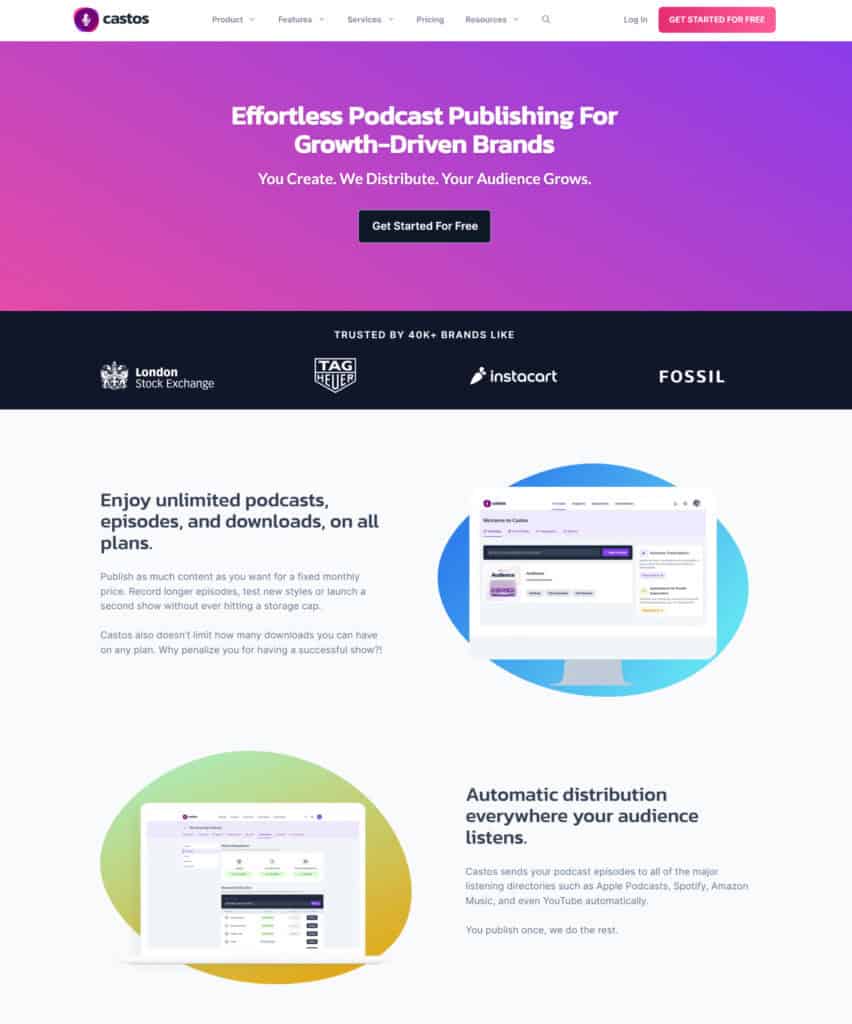
Essentially, a podcast hosting platform is where you store your files. Your host also generates and updates your RSS feed. Like we mentioned earlier, this feed is critical. It contains all of the information the listening apps need to offer your show. If your feed is configured incorrectly – or worse, missing entirely – listeners won’t be able to access your show.
Apple, Google, Spotify and the other podcasting apps are just directories. They don’t store your content or generate an RSS feed for you.
Can you host your show on your own site? Not really. Your website host isn’t configured properly for it. You could purchase the right web hosting plan to store your own audio files, but that would be more expensive than using one of the podcast hosting services.
Once you are set up with a podcast host, you’ll need to visit each directory and submit your RSS link so they know where to look for your show. This is a one-time task. Once they have your feed, they will monitor it indefinitely for new content.
Furthermore, a podcast hosting service isn’t just space for your audio files. It offers other benefits, like analytics, WordPress integrations, support, and tools to promote your show.
“What is a Podcast?” FAQs
Still have questions about podcasting? Here are some frequently asked questions that will help you understand what is a podcast.
What is a Podcaster?
A podcaster is someone who creates and publishes audio or video content, known as a podcast, typically released as episodes on a regular schedule.
What is a Podcast Host?
A podcast host is a platform or service that stores and distributes podcast episodes to listeners via various podcast directories and apps.
What is a Podcast App?
A podcast app is a software application that allows users to subscribe to, download, and listen to podcasts on their mobile devices or computers.
What is the Purpose of a Podcast?
The purpose of a podcast is to entertain, educate, or inform listeners on a wide range of topics through regularly released episodes.
Are Podcasts Popular?
Yes, podcasts are increasingly popular, with millions of listeners tuning in to diverse shows across various genres and interests.
Do Podcasts Cost Money?
Most podcasts are free to listen to, though some may offer premium content or ad-free episodes through subscriptions or memberships.
How Long is a Typical Podcast Episode?
Podcast episodes vary in length but typically range from 20 minutes to an hour, depending on the show’s format and content.
Can Anyone Start a Podcast?
Yes, anyone with access to recording equipment and the internet can start a podcast, though creating a successful one involves planning, consistent content, and effective promotion.
What Equipment Do You Need to Start a Podcast?
Basic podcasting equipment includes a good quality microphone, headphones, recording software, and a computer, though additional gear like pop filters and mixers can enhance audio quality.
Wrap Up
If you were one of those people who were wondering “What is a podcast?” we hope we answered your question as thoroughly as possible. If you’re still unclear, feel free to leave a comment and we’ll do our best to help you out.
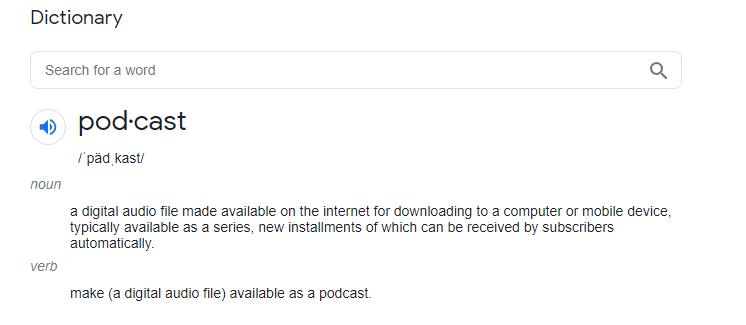
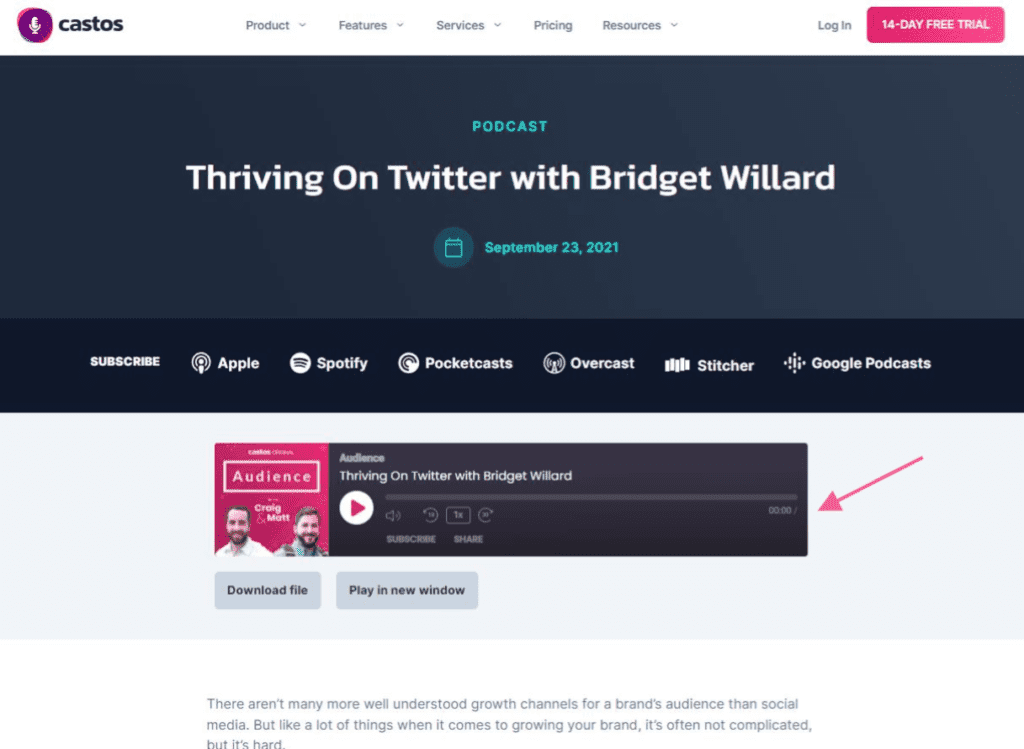
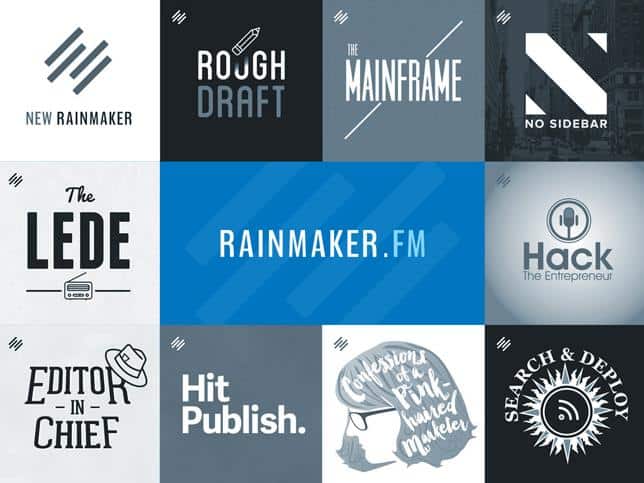
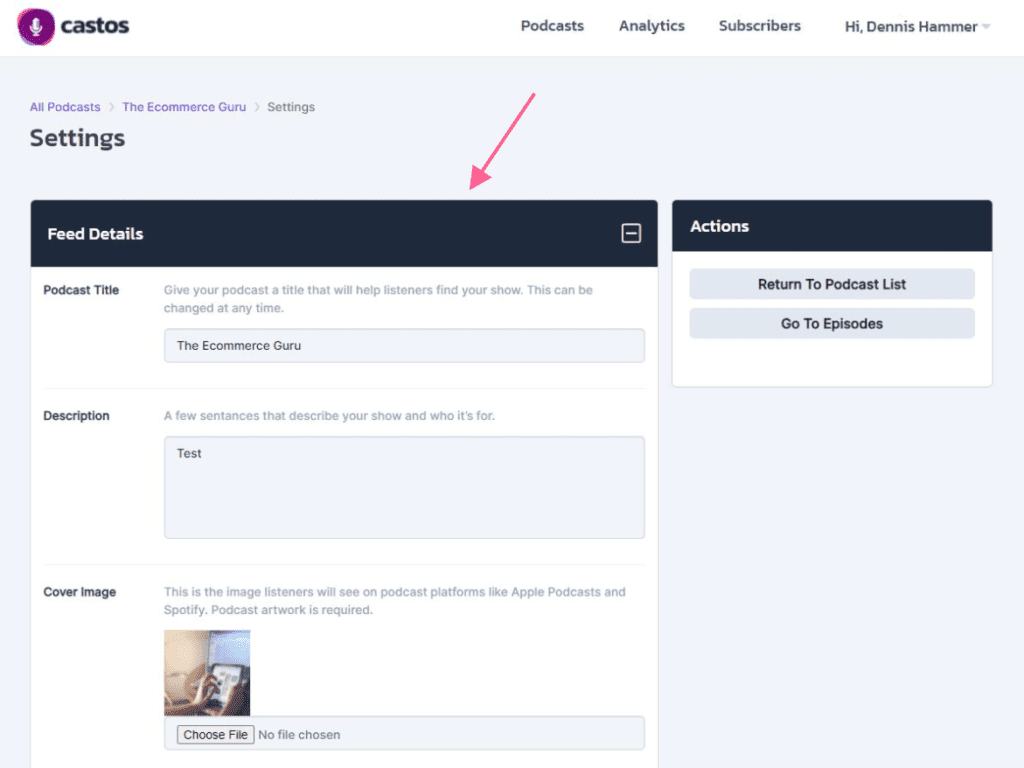
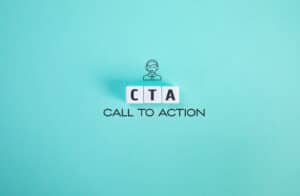
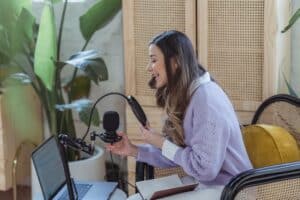
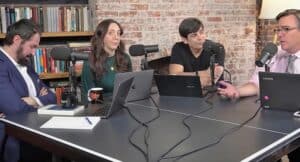
Comments are closed.